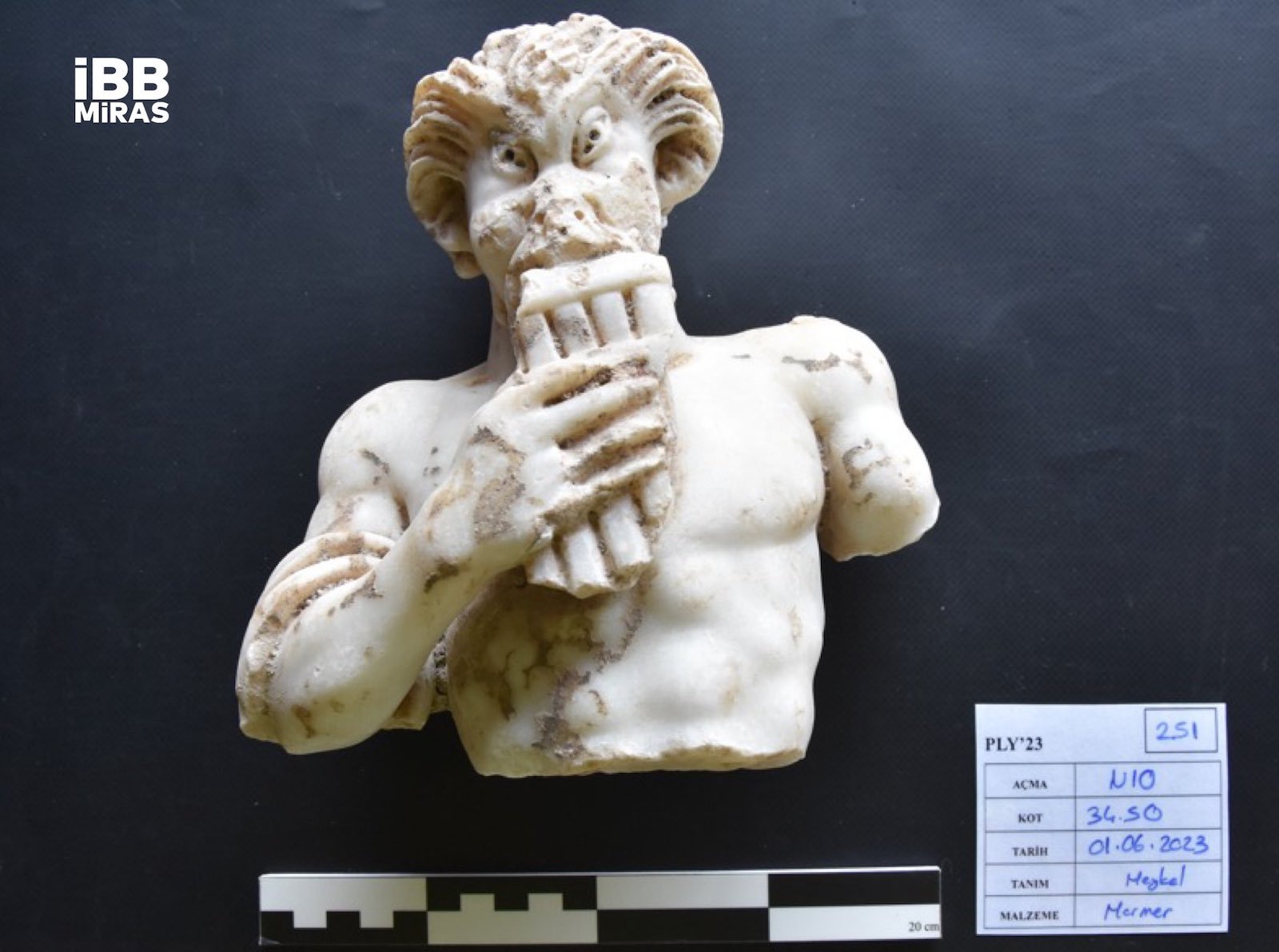
An eight-inch-high figurine of the Greek god Pan, a symbol of fertility that is thought to be some 1,700 years old, was found by Turkish authorities during an excavation at the ancient Byzantine church of St. Polyeuctos in Istanbul. Dating from the year 527, the church’s remains are in the Saraçhane Archaeology Park in the city’s center.
“This morning, we unearthed another magnificent archaeological find in Istanbul, a city bursting with history,” said Mahir Polat, the general secretary of the Istanbul Metropolitan Municipality, in a statement posted to Twitter on June 1.
In ancient Greek mythology, Pan was the god of the wild, shepherds, and flocks, and a companion of nymphs, depicted with the hindquarters, horns, and legs of a goat. In some versions of the myth, it is Pan, rather than the satyr Marsyas, who challenges Apollo, the god of light and music, to a contest. His instrument of choice, a set of pipes, appears as his attribute in the newly discovered figurine. (In either case, whether the story features Marsyas or Pan, the challenger lost to Apollo.)
A Roman-era figurine of the Greek god pan. Courtesy Istanbul Metropolitan Municipality.
According to Christian tradition, Polyeuctus, a wealthy Roman officer, was the first martyr in Melitene, Armenia, under Roman Emperor Valerian, and was killed in the year 259. The church dedicated to him was built by the Roman noblewoman Anicia Juliana as an assertion of her own imperial lineage. Before the building of the Hagia Sophia by Emperor Justinian in 537, the Polyeuctos church is thought to have been the city’s largest.
The church of St. Polyeuctus is thought to have been modeled on the proportions of Solomon’s Temple, which stood in Jerusalem. The building however fell into disrepair starting in the 11th century, was built over in the Ottoman period, and was rediscovered during excavations in the 1960s.
Now in the care of the Archaeology Museums Directorate, the Pan statue will be examined to see if a more precise date can be assigned to it.
The discovery follows by about two months the unearthing of a fragment of a statue of a man wrapped in a toga:
“We see that we have reached the lost Roman Palace part of Istanbul with the statue we found earlier,” tweeted Polat.
More Trending Stories:
The Art Angle Podcast: James Murdoch on His Vision for Art Basel and the Future of Culture
A Sculpture Depicting King Tut as a Black Man Is Sparking International Outrage